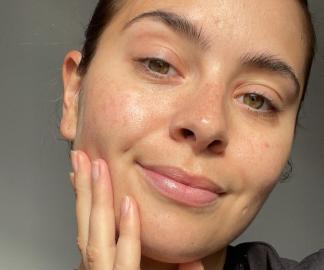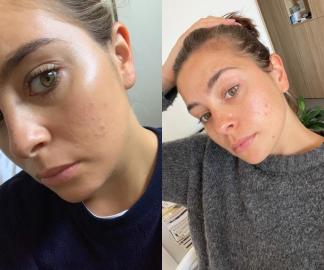
Hormonal acne is crap, but post-contraceptive pill acne is a whole other kettle of fish.
I say this because I have dealt with it twice — about four years ago after going off the pill, and now.
When you Google ‘side effects of going off the pill’, you’ll get a whole list of symptoms, one of them being changes in your skin resulting in acne, or pimples and blemishes.
Acne is unpredictable, difficult to treat and for some, can have a significant impact on self confidence.
From hormonal breakouts and painful pimples to deep, stubborn cystic acne, it can also differ from person to person.
In all honesty, acne after going off the pill is a seriously complex medical topic — much more than I can tackle here, and one that should be treated with the advice of your GP, dermatologist or dermal therapist.
But as someone who’s coming out the other side, I wanted to share some learnings with all of you who might be going through a similar thing.
I also found the second time around coming off the pill, the impacts have been much less severe, so feel pretty confident about a few tips that can (hopefully) help someone else on their personal journey.
So without further delay, keep scrolling for seven key lessons I’ve learnt about managing acne after going off the pill.
1. Everyone’s Journey Is Different.
If the ongoing discussions I’ve been having with female friends, colleagues and strangers on the internet are anything to go by, everyone’s experience coming off the pill is entirely different.
Does coming off the pill cause acne?
Well, some will breeze through without so much as a clogged pore, whereas others will spend months and months in hormone hell, fighting an uphill blemish battle.
The scary part is, you don’t really know what camp you fall into until you get there.
For me, it looked like persistent inflamed pimples along my cheeks and jawline that took weeks to heal, along with a beyond greasy t-zone.

There's no manual for how to come off the pill without getting acne, but it helps to understand why it can sometimes happen.
When I asked a dermatologist about what happens when you go off the pill, she explained to me that the pill works to decrease oil flow that’s hormonally-triggered in the sebaceous (oil) glands.
How much oil our skin naturally produces is largely determined by genetics, but can also be impacted by certain medical conditions like Polycystic Ovary Syndrome (PCOS) or the medications we take.
So, when you withdraw from the pill, that oil flow kicks into overdrive, encouraging pre-existing pimples to return or minor breakouts to worsen.
That might be the reason why your categorically dry-skinned friend came off the pill with zero skin issues, but your monthly period breakout has multiplied tenfold.
But take that with a grain of salt.
Get more dermatologist acne information in this YouTube video below.







